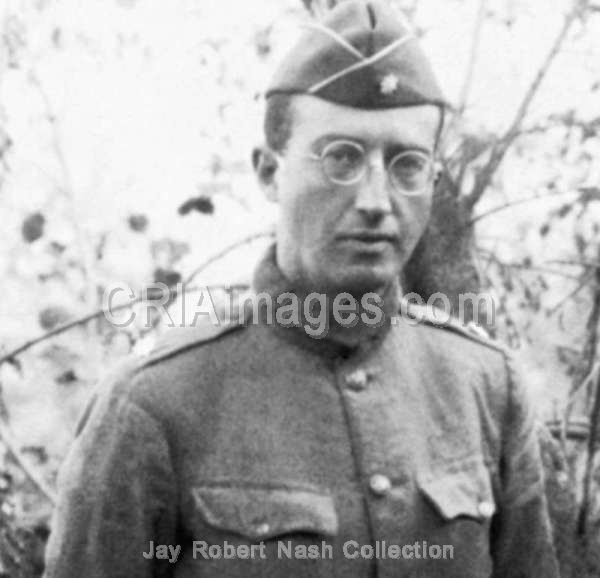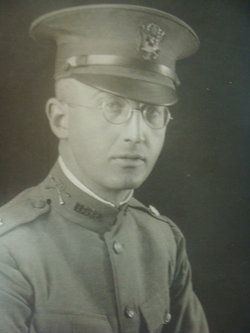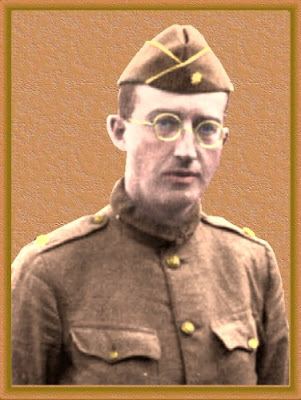Nickname(s) "Galloping Charlie" Name Charles Whittlesey Other work Attorney Battles and wars World War I | Rank Lieutenant Colonel Awards Medal of Honor Years of service 1917–1919 Education Harvard Law School | |
 | ||
Born January 20, 1884
Florence, Wisconsin ( 1884-01-20 ) Battles/wars World War I
*Meuse-Argonne Offensive Died November 26, 1921, Atlantic Ocean | ||
Service/branch United States Army Allegiance United States of America | ||
Lieutenant Colonel Charles White Whittlesey (January 20, 1884 – presumed dead November 26, 1921) was a United States Army officer and an American Medal of Honor recipient who led the "Lost Battalion" in the Meuse-Argonne Offensive in October 1918 during the final stages of World War I.
Contents
- Early life and education
- Military service
- Post war
- Disappearance
- Legacy
- Medal of Honor citation
- References

Early life and education

Whittlesey was born in Florence, Wisconsin, where his father worked as a logger, and he attended school in Green Bay, Wisconsin. He moved with his family in 1894 to Pittsfield, Massachusetts, where he graduated from Pittsfield High School class of 1901. He enrolled at Williams College, where he was a member of St. Anthony Hall, graduating in 1905. He was voted the "third-brightest man" in his class, and because of his aristocratic manner was nicknamed "Count." He earned a law degree from Harvard Law School in 1908. Soon after graduating he formed a law partnership with his Williams classmate J. Bayard Pruyn in New York City. Influenced by his friend and roommate at Williams, Max Eastman, Whittlesey spent several years as a member of the American Socialist Party before resigning his membership in disgust over what he viewed as the movement's increasing extremism.
Military service

In May 1917, a month after the American entry into World War I, Whittlesey took a leave from his partnership and joined the U.S. Army. He shipped for the Western Front as a captain in the 308th Infantry Regiment, 154th Infantry Brigade, part of the 77th Infantry Division. The 77th was known as the "Metropolitan Division," because it was made up largely of New York City men, principally from the polyglot Lower East side. Its members spoke 42 different languages or dialects.

By September 1917 Whittlesey was commissioned a major. On the morning of October 2, 1918, the 77th Division was ordered to move forward against a heavily fortified German line as part of a massive American attack in the Meuse-Argonne region. Whittlesey commanded a mixed battalion of 554 soldiers, who advanced forward through a ravine. Because the units on their flanks failed to make headway, Whittlesey's troops were cut off from their supply lines, pinned down by German fire from the surrounding 200-foot (61 m) high bluffs. The following days were perilous for Whittlesey and his men, as they were without food or water. Some of the men had never thrown a live grenade, but for four days, they resisted snipers and attacks by waves of German troops armed with hand grenades, and in one incident, flame throwers. During this period war correspondents seized on the incident and dubbed the unit the "Lost Battalion."

On October 7, the Germans sent forward a blindfolded American POW carrying a white flag, with a message in English:
Whittlesey's alleged reply was "You go to hell!", although he later denied saying it, saying a response wasn't necessary. He ordered white sheets that had been placed as signals for Allied aircraft to drop supplies to be pulled in so they would not be mistaken for surrender signals. That night, a relief force arrived and the Germans retreated. Of the original 554 troops involved in the advance, 107 had been killed, 63 were missing and 190 were wounded. Only 194 were able to walk out of the ravine.
Post war
Whittlesey received a battlefield promotion to lieutenant-colonel and returned to the United States as a war hero, receiving on December 6, 1918, one of the first three Medals of Honor awarded for valor in the war. (One of the other two went to his second-in-command, George G. McMurtry.)
The story of the Lost Battalion was one of the most talked about events of World War I. In 1919, the events were made into a movie.
He tried to return to his career, working as an attorney at the Wall Street firm of White & Case, but found himself in constant demand for speeches, parades, and honorary degrees. The pressure wore on him; he complained to a friend: "Not a day goes by but I hear from some of my old outfit, usually about some sorrow or misfortune. I cannot bear it much more."
Disappearance
In November 1921, Whittlesey acted as a pallbearer at the burial of the Unknown Soldier at Arlington National Cemetery, along with fellow Medal of Honor recipients Samuel Woodfill and Alvin York. A few days later he booked passage from New York to Havana aboard the SS Toloa, a United Fruit Company ship. On November 26, 1921, the first night out of New York, he dined with the captain and left the smoking room at 11:15 p.m. stating he was retiring for the evening, and it was noted by the captain that he was in good spirits. Whittlesey was never seen again. He was reported missing at 8:00 a.m. the next day. He is presumed to have committed suicide by jumping overboard, although no one reported seeing him jump and Whittlesey's body was never recovered. Before leaving New York, he prepared a will leaving his property to his mother. He also left a series of letters in his cabin addressed to relatives and friends. The letters were addressed to his parents, his brothers Elisha and Melzar, his uncle Granville Whittlesey, and to his friends George McMurtry, J. Bayard Pruyn, Robert Forsyth Little and Herman Livingston, Jr. Also in his cabin was found a note to the captain of the Toloa leaving instructions for the disposition of the baggage left in his stateroom. He left the famous German letter asking for surrender to McMurtry.
Whittlesey's cenotaph is in a cemetery in Pittsfield, Massachusetts. It notes that his body was never recovered.
Legacy
In 1948, the Charles White Whittlesey Room was dedicated at the Williams Club in New York City.
In 2001, U.S. television channel A&E made a television movie called The Lost Battalion based on accounts of the battle. In that portrayal Major Whittlesey was played by Ricky Schroder.
Medal of Honor citation
Rank and organization: Major, U.S. Army, 308th Infantry, 77th Division. Place and date: Northeast of Binarville, in the forest of Argonne France, 2 – October 7, 1918. Entered service at: Pittsfield, Mass. Birth. Florence, Wis. G.O. No.: 118, W.D., 1918.
Citation:
Although cut off for 5 days from the remainder of his division, Maj. Whittlesey maintained his position, which he had reached under orders received for an advance, and held his command, consisting originally of 46 officers and men of the 308th Infantry and of Company K of the 307th Infantry, together in the face of superior numbers of the enemy during the 5 days. Maj. Whittlesey and his command were thus cut off, and no rations or other supplies reached him, in spite of determined efforts which were made by his division. On the 4th day Maj. Whittlesey received from the enemy a written proposition to surrender, which he treated with contempt, although he was at the time out of rations and had suffered a loss of about 50 percent in killed and wounded of his command and was surrounded by the enemy.
